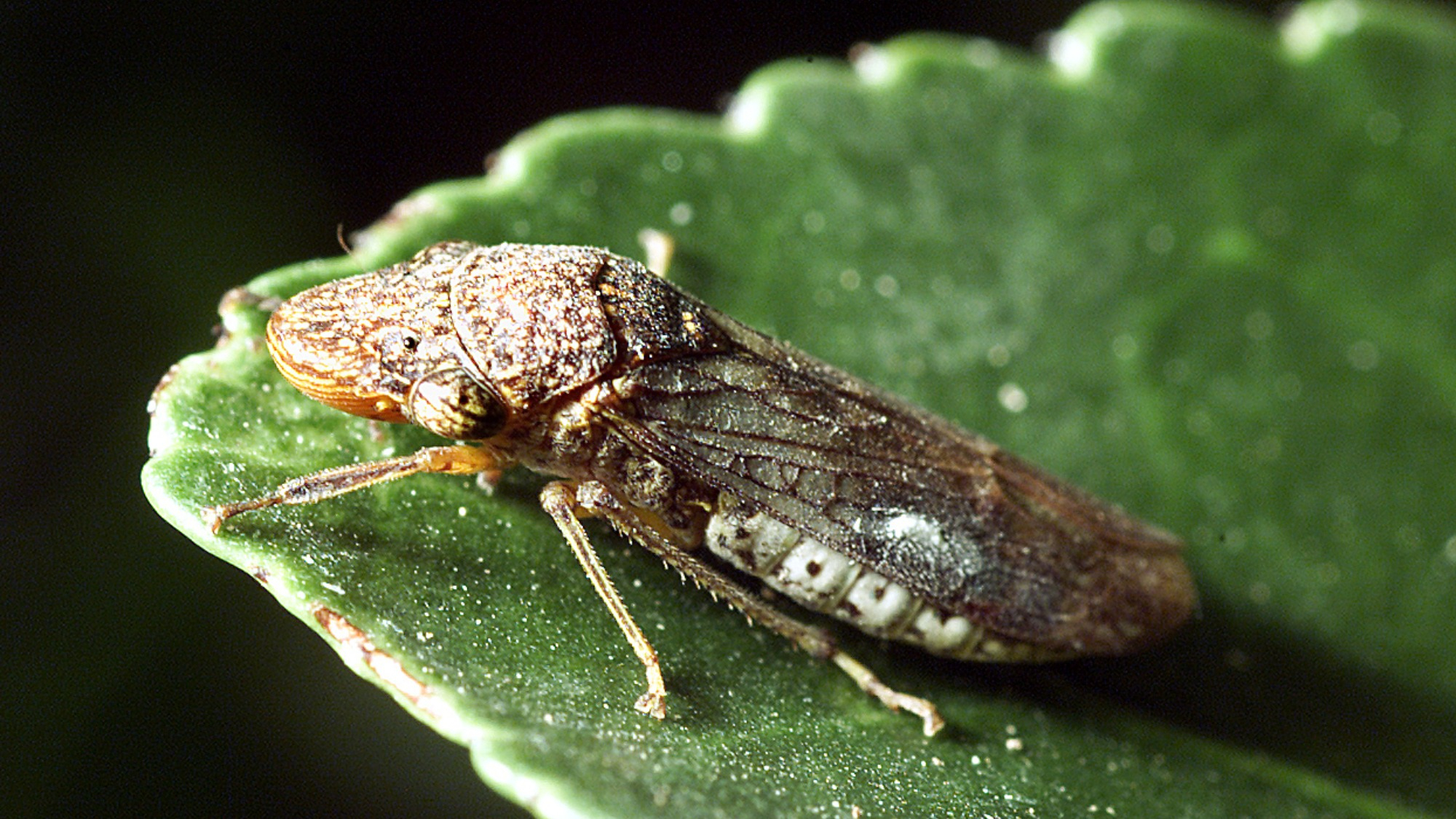

Going to the bathroom is different for every creature. Tigers and penguins are known for projectile excretion that shoots out a fire hose, whereas wombats poop in cubes, sloths only poop once a month, and some wood-boring clams use poop chimneys to build a home.
All animals, even insects need to get rid of their waste. What goes in, afterall, must eventually come out. After Georgia Tech biomechanics specialist Saad Bhamla caught the rare sight of an insect urinating in his backyard, he was curious what mechanisms the critter used to relieve itself. He watched as the bug formed an almost perfectly round droplet on its tail before quickly launching away, a pattern repeated for hours.
[Related: These clams use poop to dominate their habitat.]
To learn more, Bhamla and bioengineering graduate student Elio Challita studied glassy-winged sharpshooters– an insect the size of a millimeter known notorious for spreading disease among crops like almonds, wine, and citrus. While they are smaller than the tip of a pinky finger, the mechanism behind their excrement can produce superpropulsion– a feat of physics and bioengineering. Their study, published February 28 in the journal Nature Communications, describes the first observation and explanation of this phenomenon in a biological system.

“Little is known about the fluid dynamics of excretion, despite its impact on the morphology, energetics, and behavior of animals,” said Bhamla, in a statement. “We wanted to see if this tiny insect had come up with any clever engineering or physics innovations in order to pee this way.”
Sharpshooters eat an almost zero-calorie diet of a nutrient deficient liquid called plant xylem sap. It only has water and a trace of minerals and they drink up to 300 times their body weight in xylem sap per day. To survive, they need to constantly drink and efficiently excrete their mostly-water fluid waste.
In this study, the team used high-speed videos and microscopy to watch precisely what was happening on the insect’s tail.
First, the scientists looked at the role played by an anal stylus, or as the team called it a “butt flicker.” When the sharpshooter is ready to pee, the butt flicker rotates backwards from a neutral position to make room as the insect squeezes out the liquid. As the flicker remains at the same angle, a droplet forms and gradually grows. When the droplet is at an optimal diameter–or roundness–the flicker rotates farther back about 15 degrees and then launches the droplet at more than 40 G’s. That’s 10 times higher than the fastest sports cars.

“We realized that this insect had effectively evolved a spring and lever like a catapult and that it could use those tools to hurl droplets of pee repeatedly at high accelerations,” Challita said.
They then measured the speed of the butt flicker’s movement and compared it to the speed of the droplets. They expected the droplets and butt flicker to move at the same speed but instead found that the speed of the droplets in air was faster than the butt flicker that flicked them. This ratio of speed suggested the presence of a principle previously shown only in synthetic systems called superpropulsion. This occurs when an elastic projectile gets a boost of energy when launch and projectile timing is matched up, like a diver timing their jump off a springboard of a diving board.
[Related: These insects have 80 times the suction power of an elephant and pee at an alarming rate.]
After taking a closer look, they saw that the butt flicker compressed the droplets which had energy stored in them because of the surface tensions on the water just before launch. To test this, they placed water droplets on an audio speaker and used the vibrations of the sound to compress the droplets at high speeds. At tiny scales, the droplets store energy due to inherent surface tension. When dropped, and if timed just right, the droplets can be catapulted at extremely high speeds.
To figure out why sharpshooters urinate in droplets, Bhamla and Challita studied micro CT scans of their morphology and took measurements from inside the insects. They calculated the pressure that is required for sharpshooters to push the fluid through a very small anal canal and found that peeing in droplets is the most energy efficient way for them to excrete waste.
The team hopes that better understanding how excretion affects animal size, behavior, and evolution can be used to prevent crop losses. Sharpshooter excretion could possibly be a vector surveillance tool infestations from bugs like the sharpshooters will likely get worse with climate change.
“This work reinforces the idea of curiosity-driven science being valuable,” Challita said. “And the fact that we discovered something that is so interesting–superpropulsion of droplets in a biological system and heroic feats of physics that have applications in other fields–makes it even more fascinating.”
